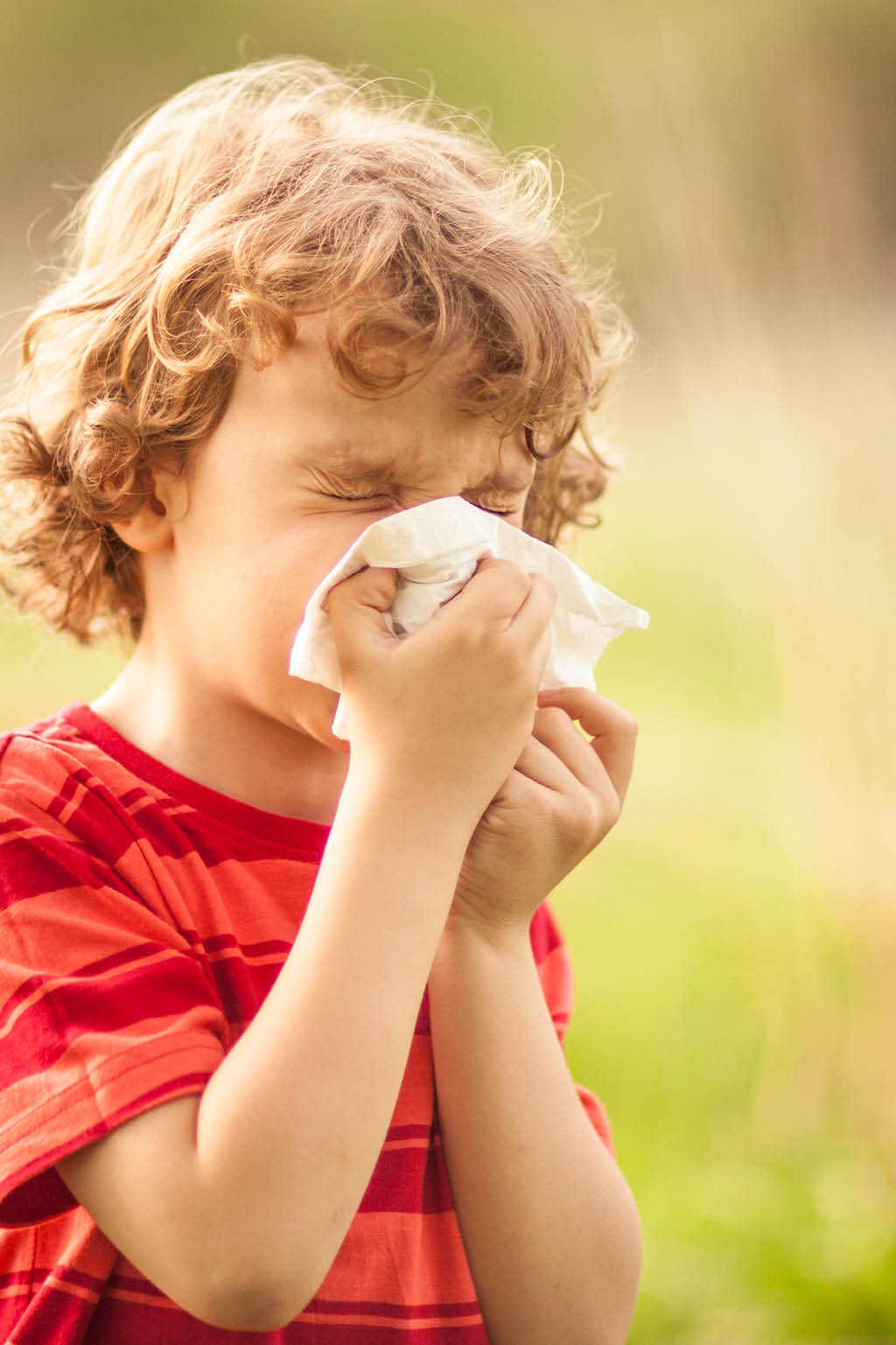All About Allergies
As a child, allergies were a big part of my life. I had reactions to milk, eggs, feathers, mold, dust, dogs, and cats, so I would get shots every week to prevent health problems. Eventually, I grew out of my childhood allergies (while developing others as an adult).
As it turns out, I’m not alone. According to the Centers for Disease Control and Prevention, allergies affect over 50 million Americans each year. What constitutes an allergy? Something that ordinarily may be harmless triggering your immune system to overreact and create antibodies that cause reactions within your body. These can range from mild symptoms, such as an upset stomach or a rash, to potentially deadly conditions, such as anaphylaxis—an acute allergic reaction that can send the body into shock, cause blood pressure to plummet, and make breathing difficult.
Even though there isn’t currently a cure for most allergies, there are many ways to treat them. For anyone with allergies or with loved ones who have allergies, understanding their causes and recognizing the symptoms is essential to helping them live healthier, more worry-free lives. (If you have allergies or believe you might, make sure to see an allergist to discuss your symptoms and decide the best course of action.)
Food for Thought
The Food and Drug Administration considers eight foods to be major allergens: eggs, fish, wheat, soybeans, tree nuts, peanuts, milk, and crustacean shellfish. As a result, the FDA requires that these eight foods, and any proteins that come from them, be called out as allergens on nutrition labels for safety purposes.
Many schools also take steps to make sure that allergy-causing foods are removed from classrooms. So caution is clearly the most important strategy when it comes to food allergies—and that includes being prepared for a reaction. An injection of epinephrine (typically delivered via an EpiPen) is often the most immediate solution. But the FDA notes that a severe reaction could start out as mild and can take up to two hours to worsen, so diligently monitoring symptoms—from rashes to tingling to nausea or more serious reactions—is vital.
Remedy reactions
People often need medication for things such as pain or infection. Unfortunately, sometimes such necessities can be hazardous because of allergies, with symptoms ranging from skin irritation to anaphylaxis. Penicillin causes the most allergic reaction symptoms, according to the American College of Allergy, Asthma and Immunology (ACAAI). If you think you have a medicinal allergy, contact your doctor or an allergist to get tested, and make sure that loved ones have a list of your drug allergies.
Skin deep
Most people would agree that accidentally touching poison ivy, poison oak, or poison sumac results in a very unpleasant experience. The itchiness can be unbearable—but that, the redness, and the rashes are the result of your skin having an allergic reaction to the plant’s oil. Similarly, conditions like eczema and hives, as well as adverse reactions to things like soap, metals, latex, and even the sun, can be caused by skin allergies. Fortunately, topical treatments can provide ample relief for these symptoms. Your parents’ age-old wisdom is true, too—scratching will only make it worse!
Pollen problems
For the millions of Americans with seasonal allergies, their stuffed or runny noses and itchy eyes can tell them what time of year it is. Hay fever, scientifically known as allergic rhinitis, is often caused by outdoor pollen from things like grass and weeds, and it’s at its worst from spring to early fall. In the case of this allergy, medications can be helpful, as are preventative steps—while outdoors, consider wearing sunglasses to block the pollen from your eyes; when in your home or your car, keep the windows closed to prevent the pollen from getting inside.
Mold and dust difficulties
Mold may be more prevalent than you think: according to the ACAAI, there are upwards of 1,000 different varieties in the US alone. Mold can grow outdoors in places like wet leaves and wooded areas and is a common allergen similar
to pollen. Indoors, it usually grows where water and humidity thrive, such as bathrooms and basements—so using a dehumidifier, ventilating, and fixing leaks goes a long way toward eliminating the mold. In addition, a bleach-based solution will kill many molds found on nonporous surfaces.
Another home-based allergy problem is dust. For this one, you can thank dust mites, super tiny arachnids that feed on our dead skin that flakes off every day. How prevalent are they? According to an Ohio State University study, an old mattress can contain between 100,000 and 10 million dust mites. The waste and body parts of these creatures become allergens.
You can treat this allergy with medicine, but you can also take steps to minimize the mites, such as covering your mattresses and pillows with dustproof covers, washing your bedding every week in hot water (at least 130 degrees), and keeping the temperature in your home below 70 and humidity levels below 50 percent. Ironically, vacuuming—generally an effective cleaning method—usually only makes the mite situation worse by stirring up the dust, so make sure your vacuum and your heater’s air filter are allergen-specific, which can help contain the dust—and the mites.
Insects, pooches, and cats—oh, my!
Most of us have experienced the pain of bee or wasp stings, but this can be a mortal threat where allergies are concerned. If you are stung and experience symptoms beyond the pain of the sting—such as severe stomach issues, chest tightness, or difficulty swallowing—seek emergency medical help to have drugs such as epinephrine or antihistamines administered.
Also, we love our pets—in fact, we have over 180 million cats and dogs in our homes. Unfortunately, many of us also suffer from pet allergies, which are caused by exposure to pet dander, shed skin, saliva, or urine. And, perhaps surprisingly, allergies can happen with any breed, to varying degrees, according to the American Academy of Allergy, Asthma & Immunology (AAAAI). Luckily, you don’t have to experience being separated from your four-legged friend if allergic reactions happen: talk to your doctor about long-term solutions such as allergy shots, and wisely choose how often you interact with your pet.
Allergies can be bothersome for many and debilitating for others, but they are usually manageable. Scientists continue to do research on allergies and are hopeful that sometime in the future better treatments can be created, if not a cure found, particularly in the realm of gene therapy. Until then, vigilance, common sense, and help from a specialist are your best defense against allergies.
For more info, visit aafa.org, acaai.org, or aaaai.org.









